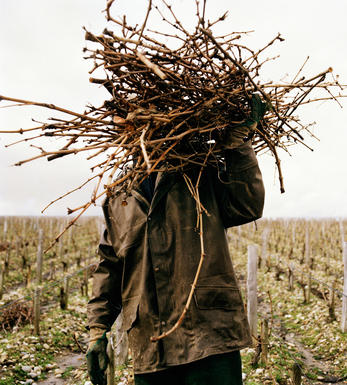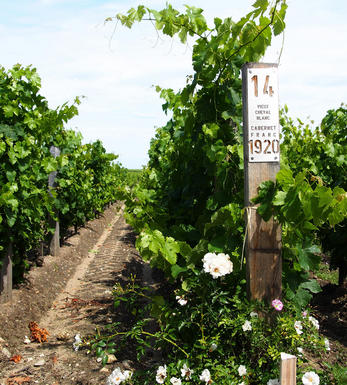
About this WINE

Champagne Laherte Freres
Champagne Laherte is at the cutting edge of artisan, grower Champagne production. It is based in Chavot, just to the south of Epernay, in a sector known as the Coteaux Sud d’Epernay, but it has holdings in 75 different parcels, covering 10 different villages mainly in the southern sectors or to the west in the Vallée de la Marne.
Firmly environmental of temperament (farming organically, following biodynamic principles), the ‘brothers’ (Laurence, Auréline, Christian and Thierry) are pleasingly pragmatic when they enter the winery, although they favour wood for the first fermentation (70% of the wines are treated to oak) and usually, but not always, eschew the malolactic fermentation.
Fermentation in oak barrels imparts the champagnes a complexity, softness and length which is unparalleled. Their Champagnes are of little or no dosage (sugar addition), to allow the wines to show the purest expression of their terroir.
Their range of Champagnes is of extraordinary quality across the board. Their Brut Nature contains 50% of barrel-aged reserve wines and has had its malolactic fermentation partially supressed. It has been aged for just over four years after a first fermentation in foudre.
The artist formerly known as the Brut Tradition (now imaginatively called Ultradition, with pleasing elision and the implication that the sugar is less than 6 g/l, which is indeed the case) is typically a blend of 60% Pinot Meunier, 30% Chardonnay and 10% Pinot Noir. It contains 40% of reserve wines.

Blanc de Blancs
In Champagne, the term Blanc de Blancs designates Champagnes made only from Chardonnay grapes. The vineyards located between Cramant and Mesnil-sur-Oger in Cote de Blancs yield the best examples of the style.
A classic Blanc de Blancs is restrained and elegant when young, yet with ageing it develops a mouth-coating brioche richness that overlays an intense expression of fruitiness. Blanc de Blancs are endowed with longer ageing potential than a typical Blanc de Noirs.
Recommended Producers: Salon, Billecart Salmon, Jacques Selosse, Dom Ruinart, Krug, Le Mesnil Grand Cru, Guy Larmandier

Chardonnay
Chardonnay is often seen as the king of white wine grapes and one of the most widely planted in the world It is suited to a wide variety of soils, though it excels in soils with a high limestone content as found in Champagne, Chablis, and the Côte D`Or.
Burgundy is Chardonnay's spiritual home and the best White Burgundies are dry, rich, honeyed wines with marvellous poise, elegance and balance. They are unquestionably the finest dry white wines in the world. Chardonnay plays a crucial role in the Champagne blend, providing structure and finesse, and is the sole grape in Blanc de Blancs.
It is quantitatively important in California and Australia, is widely planted in Chile and South Africa, and is the second most widely planted grape in New Zealand. In warm climates Chardonnay has a tendency to develop very high sugar levels during the final stages of ripening and this can occur at the expense of acidity. Late picking is a common problem and can result in blowsy and flabby wines that lack structure and definition.
Recently in the New World, we have seen a move towards more elegant, better- balanced and less oak-driven Chardonnays, and this is to be welcomed.



Buying options
Add to wishlist
Description
Champagne Laherte is based in Chavot , just to the south of Epernay, in a sector known as the Coteaux Sud d’Epernay, but has holdings in 75 different parcels , covering 10 different villages mainly in the southern sectors or to the west in the Vallée de la Marne. Firmly environmental of temperament, the ‘brothers’ (Laurence, Auréline, Christian and Thierry) are pleasingly pragmatic when they enter the winery, although they favour wood for the first fermentation (70% of the wines are treated to oak) and usually, but not always, eschew the malolactic fermentation.
The Brut Nature contains 50% of barrel –aged Reserve Wine and has had its malolactic fermentation partially supressed. It has been aged for just over four years after a first fermentation in foudre. The nose is expressive and interesting with flinty notes vying with sweet apple, peach and quince. The palate profile is fuller and rounder than that normally associated with examples from further south in the Côte des Blancs, and has its own distinctive personality. The lack of sugar is more than made up for by the oak-induced texture and the finish is rich and pleasingly decadent
Simon Field MW, Wine Buyer
wine at a glance
Delivery and quality guarantee